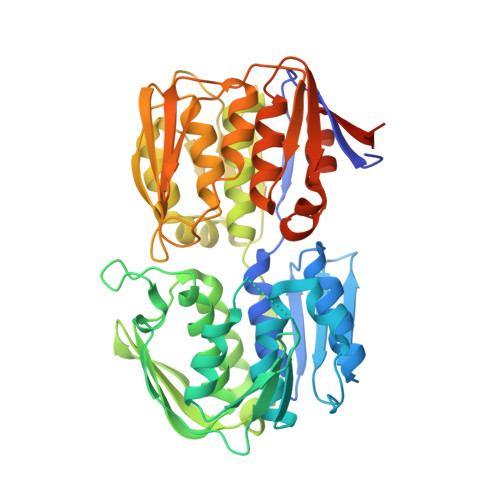Structural and functional characterization of NikO, an enolpyruvyl transferase essential in nikkomycin biosynthesis.
Oberdorfer, G., Binter, A., Ginj, C., Macheroux, P., Gruber, K.(2012) J Biol Chem 287: 31427-31436
- PubMed: 22810238
- DOI: https://doi.org/10.1074/jbc.M112.352096
- Primary Citation of Related Structures:
4FQD - PubMed Abstract:
Nikkomycins are peptide-nucleoside compounds with fungicidal, acaricidal, and insecticidal properties because of their strong inhibition of chitin synthase. Thus, they are potential antibiotics especially for the treatment of immunosuppressed patients, for those undergoing chemotherapy, or after organ transplants. Although their chemical structure has been known for more than 30 years, only little is known about their complex biosynthesis. The genes encoding for proteins involved in the biosynthesis of the nucleoside moiety of nikkomycins are co-transcribed in the same operon, comprising the genes nikIJKLMNO. The gene product NikO was shown to belong to the family of enolpyruvyl transferases and to catalyze the transfer of an enolpyruvyl moiety from phosphoenolpyruvate to the 3'-hydroxyl group of UMP. Here, we report activity and inhibition studies of the wild-type enzyme and the variants C130A and D342A. The x-ray crystal structure revealed differences between NikO and its homologs. Furthermore, our studies led to conclusions concerning substrate binding and preference as well as to conclusions about inhibition/alkylation by the antibiotic fosfomycin.
Organizational Affiliation:
Institute of Molecular Biosciences, University of Graz, A-8010 Graz, Austria.















